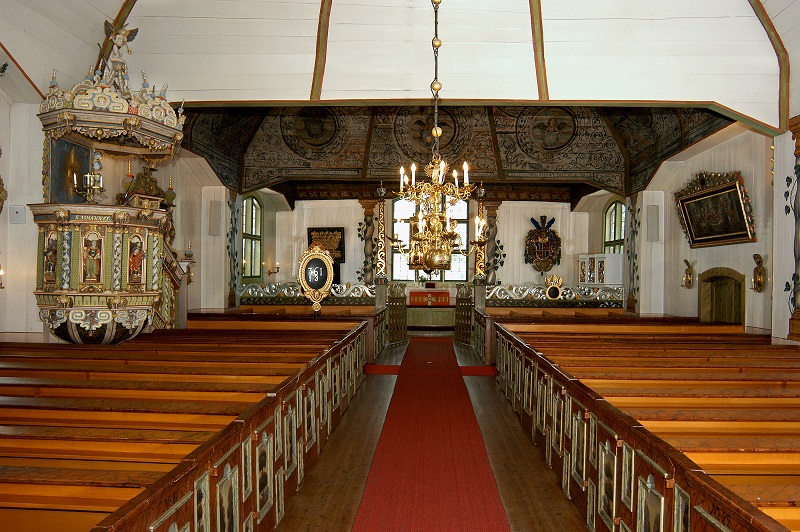Evästeet
EvästeetLinkki avautuu uudessa välilehdessä

Seminaarinkatu, 95400 Tornio
The church of Tornio is open 1.- 16.8.2023 Monday - Wednesday 12 am - 3 pm
The church of Tornio is the oldest and the most valuable building in Tornio, the oldest town in the province of Lapland. Despite its age, however, it is not a museum. It is still being used as a church of a parish of about 8 200 people. The church and the bell tower are according to expert opinions among the best products of Finnish church building art of wooden churches. The first church of Tornio, which was founded in 1621, was completed in 1647 but hit by a lightning it burned down to the ground in 1682. The building of the present church located a little further north-east from its former site was started in this spring of 1684 and this house of God dedicated to Hedvig Elenora, Queen of Sweden, at the time, was consecrated on July 11th 1686. The work of planishing the church went on until the beginning of 18th century. This church is now the oldest wooden church still in use in northern Finland. The bell tower built west of the church in 1686-1687 is the oldest of its kind still in use.
The designer and builder of both the church and the bell tower was a Finnish peasant Matti Härmä. He had inherited his skill from his father Jooseppi Härmä, who is known to have built the church of Iisalmi among other things. The church of Tornio is a typical wooden church of the area feature in rectangular frame structures with pillars supporting the trasses and with a steeple which in former times also served as a landmark. When building this church the builder mainly had medieval Finnish great granite churches as models. Though he did not slavishly imitate their style. The trasses of the ceiling, for instance, were originally made for the barrow vault but in the course of the work, the plan was suddenly altered and the ceiling was covered with four vaults. Two of these ceiling vaults are decorated with valuable paintings. The oldest of the vault paintings date from the year 1687 and the cost of it was paid by the magistrate Henrik Eerikinpoika together with his wife Riitta Iisakintytär. Their last resting place is in their family tomb under the floor of the church.
The vivid biblical paintings of the choir vault were donated a year later by Gabriel Tuderus. The renowed person of Alatornio and his wife. The big persons and incidents in the Old and New Testament, kings, prophets, the appearance of the Angel Gabriel to the Virgin Mary, Jesus his birth, the baptism of Jesus, etc.
According to the latest research Lars Gallenius from Oulu is considered to be the painter. The colors of these paintings have been preserved amazingly well, this presumably being do to the fact that the colors in those day were obtained from the nature.
The most beautiful and valuable objects of the church are the Chancellor Railing with an elaborate fine pattern and the imposing pulpit with its background. These wooden carvings late Renaissance or early Baroch in style are the creation of Niilo Jaakonpoika Fluur, a wood carver from Tornio. The sculptural work as well as the older altar piece which dates from the year 1701 describes the first Lord supper and these were painted by a Danish artist Didrik Möllerum. For the coloring of the sculpture he used intense contrasting colors such as gold, red, green, blue, etc. The second of the piece describes Jesus in Getsemane and was painted by a Finnish artist called Ollongren in 1754.
As to the furnishings of the church in addition to the many chandeliers and bracket lamps there can be mentioned set highest of the left on the altar wall a tablet which commemorates the visit of King Charles 11th of Sweden to Tornio in 1694. For the first and last time in his life the king saw the midnight sun. What he felt in seeing it he wrote in his notebook and those words were then copied on a memorial tablet. Underneath hangs a Latin inscription about Martinus Kempe, the first chaplain of the parish. On the right of the altar wall, the only coat of arms in the churches of Lapland can be seen. It is the burial coat of arms of a noble man, Major Alexander Ferdinand von Zacken, who died in 1694. He lies buried under the floor of the church like so many former inhabitants of Tornio.
EvästeetLinkki avautuu uudessa välilehdessä